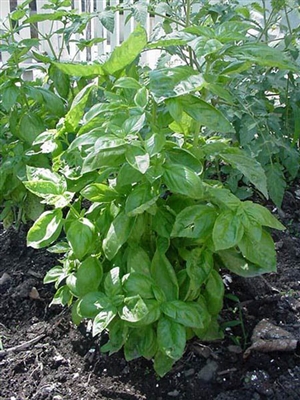A black tweed skirt with a slightly flared silhouette can become one of the constants of a basic wardrobe. A universal pattern allows you to sew a model from almost any fabric.

60s: hot and stylish! Burda Special Project 07/2019
You will need (for size 38):
 • 0.65 m of woolen fabric 1.5 m wide; • 1 m silk for lining 1.5 m wide; • 8 buttons; • 1 secret zipper 22-30 cm long.
• 0.65 m of woolen fabric 1.5 m wide; • 1 m silk for lining 1.5 m wide; • 8 buttons; • 1 secret zipper 22-30 cm long.
Besides:
 • 0.6 m calico for the manufacture of the layout; • polyethylene for transferring patterns from a sheet of patterns; • pen or marker; • centimeter tape, tailor's pins; • tailor's chalk and washable marker; • scissors for cutting and small scissors for needlework; • ruler and pattern for allowances; • iron; • sewing machine needle, manual needle for sewing, sewing thread, presser foot. In this master class, a flared silhouette skirt pattern from Burda 11/2012 was used as the basis:
• 0.6 m calico for the manufacture of the layout; • polyethylene for transferring patterns from a sheet of patterns; • pen or marker; • centimeter tape, tailor's pins; • tailor's chalk and washable marker; • scissors for cutting and small scissors for needlework; • ruler and pattern for allowances; • iron; • sewing machine needle, manual needle for sewing, sewing thread, presser foot. In this master class, a flared silhouette skirt pattern from Burda 11/2012 was used as the basis:
- Special offer

- 1
- 2
- 3
- 4
Layout and adjustment patterns
Using polyethylene or tracing paper, copy the details of the pattern, the lines of the middle of the front panel, the direction of the lobar and the contours of the tucks. Transfer the pattern to the breadboard fabric, providing for allowances at the back and side seams. No allowances are needed at the waist and bottom of the skirt. Sew tucks, back and side seams. Try and adjust the layout. Pockets in the layout can not be done, but at the fitting you can identify and mark out the entrances to the pockets. The fitting showed the need for the following changes: increase the tuck solution by 1 cm for each tuck, lengthen the tucks by 2.5 cm, add 2 cm at the back seam. In addition, changes were made to the pattern: there is no seam on the front panel, another type of pockets , instead of a belt, the waistline is raised by 2.5 cm. To unfasten the model and, taking into account the required changes, transform it into patterns that can be used for cutting.
The fitting showed the need for the following changes: increase the tuck solution by 1 cm for each tuck, lengthen the tucks by 2.5 cm, add 2 cm at the back seam. In addition, changes were made to the pattern: there is no seam on the front panel, another type of pockets , instead of a belt, the waistline is raised by 2.5 cm. To unfasten the model and, taking into account the required changes, transform it into patterns that can be used for cutting.  To simulate a pocket with a trimmed barrel: on a tracing paper or polyethylene, transfer the side line of the front panel, the waist line and draw a burlap randomly. Transfer the line of entry into the pocket to the received part - this is a piece for cutting a burlap pocket whole-cut with a barrel + burlap. On the front panel of the skirt, cut the barrel along the line of entry into the pocket.
To simulate a pocket with a trimmed barrel: on a tracing paper or polyethylene, transfer the side line of the front panel, the waist line and draw a burlap randomly. Transfer the line of entry into the pocket to the received part - this is a piece for cutting a burlap pocket whole-cut with a barrel + burlap. On the front panel of the skirt, cut the barrel along the line of entry into the pocket.
Cut
Before opening the fabric, it is necessary to decorate: the wool tweed and the silk lining are ironed through a damp iron and let the fabric cool and “rest”. Fill tweed in one layer. Layout details from coarse calico on the seamy side of the fabric. In this master class, the cutting of parts was carried out across the lobar, since the cage is symmetrical in the duck, but not in the lobar.
Fill tweed in one layer. Layout details from coarse calico on the seamy side of the fabric. In this master class, the cutting of parts was carried out across the lobar, since the cage is symmetrical in the duck, but not in the lobar.
How to cut from fabric to cage: master class
If the fabric is striped or in a cage, it is necessary to transfer the print to the patterns for alignment.  Transfer all construction lines, as well as the marking of the entrance to the pocket and the line of the middle of the front to the fabric. Depending on the material, this can be done using a water-soluble marker (previously tested on an unnecessary flap) or basting stitches with a contrasting thread.
Transfer all construction lines, as well as the marking of the entrance to the pocket and the line of the middle of the front to the fabric. Depending on the material, this can be done using a water-soluble marker (previously tested on an unnecessary flap) or basting stitches with a contrasting thread.
Using a ruler and chalk to outline allowances:
 - for the side, back seam, along the lines of the entrances to the pockets and along the waist line - 1.5 cm; - on the bottom of the skirt - 2 cm; - rounded sections of burlap pockets - 1 cm.
- for the side, back seam, along the lines of the entrances to the pockets and along the waist line - 1.5 cm; - on the bottom of the skirt - 2 cm; - rounded sections of burlap pockets - 1 cm. Cut parts along marked lines.
Cut parts along marked lines.
 From the lining fabric, cut out the details of the front (whole, without cutting the barrel) and rear panels, as well as burlap pockets and a slanting inlay for processing allowances (for this workshop, 5.3 m in length of 4 cm wide were needed).
From the lining fabric, cut out the details of the front (whole, without cutting the barrel) and rear panels, as well as burlap pockets and a slanting inlay for processing allowances (for this workshop, 5.3 m in length of 4 cm wide were needed).
Pockets and skirt parts assembly
On the front panel of the skirt, make pockets with a trimmed barrel.
How to make pockets with trimmed side: master class
 On the rear halves of the skirt, make tucks and tighten in the middle direction.
On the rear halves of the skirt, make tucks and tighten in the middle direction.
To process with oblique tape the allowances of the side and back seam:
 - 4 mm wide ribbon cut along the oblique, pin the front side to the front side of the allowance and sew at a distance of 7 mm from the cut; - iron the inlay for the allowance, bend the cut and surround the allowance with the inlay. Pin with pins and sweep, and then iron;
- 4 mm wide ribbon cut along the oblique, pin the front side to the front side of the allowance and sew at a distance of 7 mm from the cut; - iron the inlay for the allowance, bend the cut and surround the allowance with the inlay. Pin with pins and sweep, and then iron; - sew from the front into the seam, grabbing the inlay from the inside. Iron. Cut the excess allowance from the inside.
- sew from the front into the seam, grabbing the inlay from the inside. Iron. Cut the excess allowance from the inside.
Advice:
- for convenience, it is better to fix the pocket: along the waist line, side cut and the entrance to the pocket. Pin with pins or sweep. - allowances for the side and back seam at the place of allowance for the hem of the skirt is best not to be edged in order not to create excessive thickness. - allowances for the rear seam at the point of attaching the zipper should not be treated with an inline, but sealed with an overlock or sewing machine. Pin the hidden zipper with pins or sweep, combining the cells along the back seam. Stitch the zipper with the special foot.
Pin the hidden zipper with pins or sweep, combining the cells along the back seam. Stitch the zipper with the special foot. Stitch the seam below the zipper, first pin this place with pins or sweep it. For convenience, it is better to use a single-track foot.
Stitch the seam below the zipper, first pin this place with pins or sweep it. For convenience, it is better to use a single-track foot. Iron the seam.
Iron the seam. Exactly matching the cage, grind the side seams.
Exactly matching the cage, grind the side seams. To process a slanting inline bottom of a skirt.
To process a slanting inline bottom of a skirt.
How to sew an oblique edging: 3 ways
 Unscrew the hem allowance on the wrong side and sew with blind stitches. Iron.
Unscrew the hem allowance on the wrong side and sew with blind stitches. Iron. Overcast lining details. Stitch tucks, side and back seams of the lining, leave the area where the zipper will be left open. Iron seams, iron tucks to the center.
Overcast lining details. Stitch tucks, side and back seams of the lining, leave the area where the zipper will be left open. Iron seams, iron tucks to the center. Bend the bottom of the lining twice, sweep and stitch at a distance of 1 mm from the fold. Iron.
Bend the bottom of the lining twice, sweep and stitch at a distance of 1 mm from the fold. Iron. Prepare two loops for hanging a skirt about 15 cm long when folded.
Prepare two loops for hanging a skirt about 15 cm long when folded.
Tip:
Hinges for hanging can be made from a finished narrow satin or rep ribbon. Or made of lining fabric: cut out two parts 32 * 3 cm, fold them in half along the front side inwards, grind them at a distance of 0.7 cm from the fold, unscrew and iron. Fold the hinges in half and pierce the sides of the skirt on the front side.
Fold the hinges in half and pierce the sides of the skirt on the front side.
Lined Skirt Connection

 Chip off the lining with the skirt with the front sides to each other, combining the rear and side seams, as well as tucks.
Chip off the lining with the skirt with the front sides to each other, combining the rear and side seams, as well as tucks. Stitch the lining to the skirt along the upper cut. Unscrew backing and sweep. Iron. Tighten the seam allowance in the zipper area, sweep it and sew it by hand with a hidden stitch to the lining.
Stitch the lining to the skirt along the upper cut. Unscrew backing and sweep. Iron. Tighten the seam allowance in the zipper area, sweep it and sew it by hand with a hidden stitch to the lining.
Tip:
 The lining along the zipper can also be sewn from the inside with a special zipper foot, as in the photo below.
The lining along the zipper can also be sewn from the inside with a special zipper foot, as in the photo below.
Bindings
From the wrong side along the waist line and along the zipper allowance, lay a manual finishing line that will fulfill both a decorative and a utilitarian role - to fix an allowance. To smoothly lay a line, use a ruler to mark the stitch places with a disappearing marker. We lay small stitches 2-3 mm wide at a distance of about 1 cm from each other with a "forward back needle" seam. Also, to fix the allowance, it can be stitched at a distance of 1-2 mm. Make fastenings on the hinges for hanging the skirts so that they do not bulge during operation:
To smoothly lay a line, use a ruler to mark the stitch places with a disappearing marker. We lay small stitches 2-3 mm wide at a distance of about 1 cm from each other with a "forward back needle" seam. Also, to fix the allowance, it can be stitched at a distance of 1-2 mm. Make fastenings on the hinges for hanging the skirts so that they do not bulge during operation:  - fasten the loop with several longitudinal stitches;
- fasten the loop with several longitudinal stitches; - braid the longitudinal stitches with transverse buttonhole stitches. Attach a lining to the bottom of the skirt by completing the “French” tack:
- braid the longitudinal stitches with transverse buttonhole stitches. Attach a lining to the bottom of the skirt by completing the “French” tack: - make several stitches 2.5-4 cm long, connecting the bottom of the skirt and lining;
- make several stitches 2.5-4 cm long, connecting the bottom of the skirt and lining;

 - braid these stitches with transverse buttonhole stitches, laying them tightly. Clips are located on the sides, front and rear - 4 pieces. Sew buttons on the entrances to the pockets, arranging them symmetrically. The upper button can be sewn, grabbing through the burlap of the pocket and the lining, so that the pocket does not sag under the weight of the buttons.
- braid these stitches with transverse buttonhole stitches, laying them tightly. Clips are located on the sides, front and rear - 4 pieces. Sew buttons on the entrances to the pockets, arranging them symmetrically. The upper button can be sewn, grabbing through the burlap of the pocket and the lining, so that the pocket does not sag under the weight of the buttons. Iron the skirt.
Iron the skirt.
Advice:
1. The upper edge of the skirt is best treated with a lined hem. If the main fabric, as in this workshop, is very thick or prickly, then the stitching can be made from a suitable fabric, more dense than the lining. 2.For loose and thick fabric, hidden zipper is not very suitable, zipper with open teeth will be more convenient to use. 3. The lining can be made a little longer so that it overlaps the trim.
3. The lining can be made a little longer so that it overlaps the trim.
Do you like retro? Even more interesting articles, patterns and fabrics in the style of the 60s on the page of our special project!
Daria Tabatchikova
By education, Daria is a PR specialist and economist, but several years ago she devoted herself entirely to her favorite business - sewing. She studied sewing from magazines, books and using the Internet, there are also sewing courses in the arsenal, but Daria considers herself self-taught. She loves to study specialized sewing literature from different years and countries, and then put her knowledge into practice. At the end of 2017, Daria became the winner of the festive contest from BurdaStyle.ru. Dasha leads her Instagram page and VKontakte group.
The author of the master class and photo: Daria TabatchikovaMaterial prepared by Julia Dekanova



